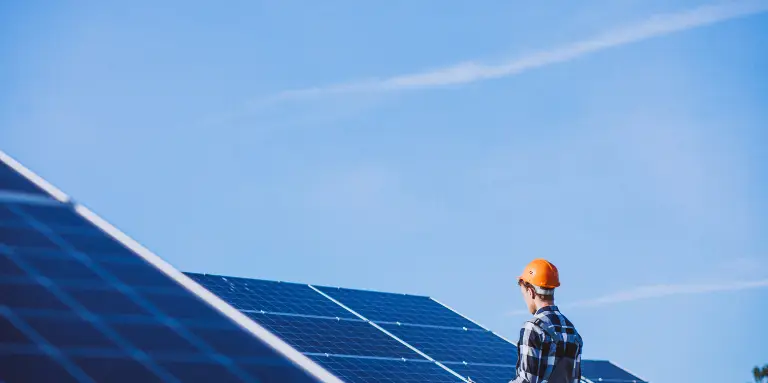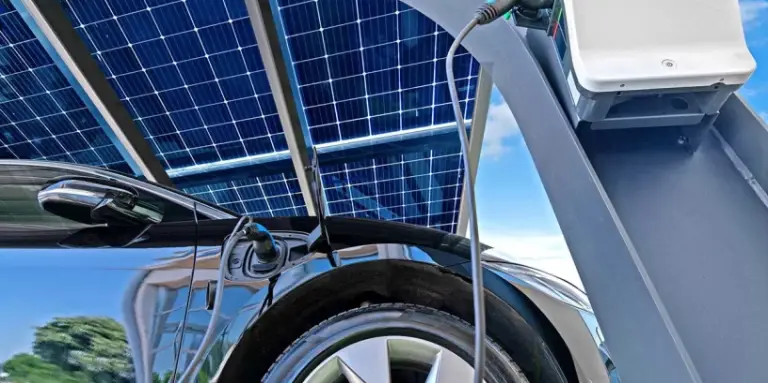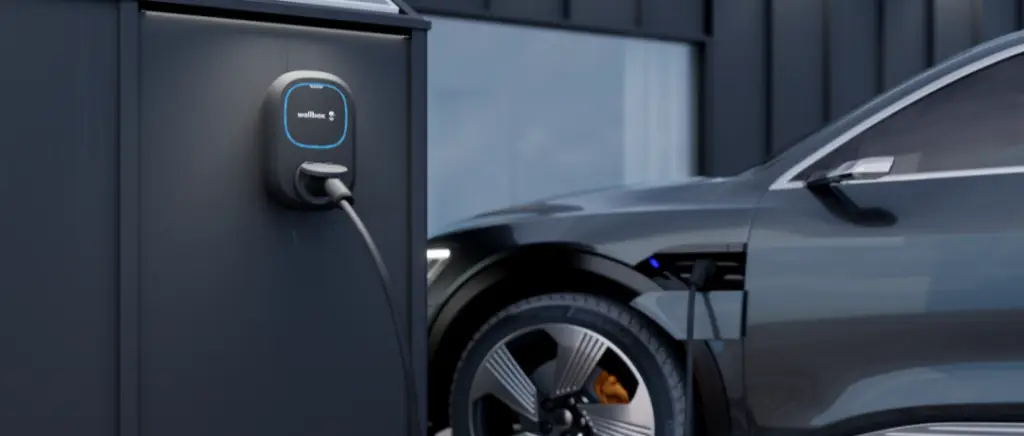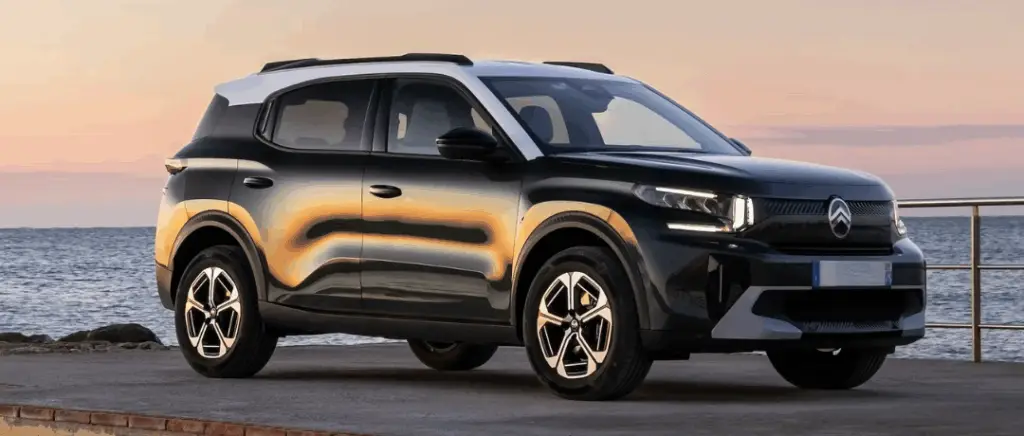How far have we got?
Since its adoption, the Climate and Resilience Act has already begun to transform the French economic landscape. Businesses are at the heart of this green revolution, facing new challenges but also new opportunities. To fully grasp the scope of this reform and its implications for the private sector, it is essential to look back at its origins and examine its main provisions.
In the following sections, we will explore the genesis of this innovative law, the result of an unprecedented democratic process, and detail its main features. This analysis will enable company directors and decision-makers to better understand the changes to come, to anticipate the necessary adaptations and to identify the levers for sustainable growth that this legislation can offer.

A look back at the genesis of the Climate and Resilience Act
The Climate and Resilience Act of 22 August 2021 has its roots in an innovative democratic process: the Citizens' Climate Convention. Launched in October 2019, this initiative brought together 150 citizens chosen by lot to draw up proposals to reduce France's greenhouse gas emissions by 40% by 2030. After nine months of intensive work, the Convention submitted 149 measures to the government in June 2020.
The Climate and Resilience Bill was finalised in February 2021, following consultations involving various stakeholders, including businesses and NGOs. Adopted on 20 July 2021 and promulgated on 22 August, this ambitious text comprises 305 articles covering a wide range of areas, from housing and agriculture to consumption and production.
For businesses, the Climate and Resilience Act represents both challenges and opportunities:
- B2B challenges Adapting business models, investing in greener technologies and complying with new regulations.
- ROI opportunities Developing new markets linked to the ecological transition, improving energy efficiency and strengthening the brand image.
- Concrete solutions :
- Adoption of electric vehicles in company fleets
- Installation of recharging points in the workplace
- Implementation of sustainable mobility plans for employees
The Climate and Resilience Act marks a decisive turning point in French environmental policy, providing a legal framework to accelerate the ecological transition of businesses and society as a whole.
What are the main points of the law?
The Climate and Resilience Act of 22 August 2021 is an ambitious reform aimed at profoundly transforming economic and social practices in favour of the ecological transition. Here are the main thrusts of this law, with a focus on the practical implications for businesses:
- Reducing greenhouse gas (GHG) emissions The Extra-Financial Performance Declaration (EFPD): Companies are now required to incorporate specific emissions reduction targets into their strategy. This includes assessing emissions linked to product transport, a key issue for optimising the supply chain and reducing the costs associated with environmental penalties.
- Energy transition in commercial property The law requires the installation of renewable energy production systems or green roofs during the construction or major renovation of industrial, commercial or tertiary buildings. The aim of these measures is to reduce energy dependency and improve the energy efficiency of buildings.carbon footprint infrastructure.
- Carbon neutrality and the fight against land artificialisation The aim is to halve the rate at which land is built up by 2030, with a target of carbon neutrality by 2050. Companies operating in the property and development sectors need to rethink their projects to comply with these constraints, while capitalising on the opportunities offered by sustainable and attractive spaces.
- Advertising restrictions and environmental labelling Since 2022, it has been forbidden to promote fossil fuels or polluting vehicles. In addition, an eco-score is gradually being introduced to inform consumers about the environmental impact of products and services. Companies need to anticipate these obligations in order to adapt their communications and strengthen their image as an eco-responsible brand.
- Sustainable mobility The creation of Low Emission Zones (ZFE) in all conurbations with more than 150,000 inhabitants by 2025 means that company fleets will have to adapt quickly. Aids such as zero-interest loans for the purchase of electric or hybrid vehicles are available to facilitate this transition.
These measures are forcing companies to rethink their business models, while at the same time offering strategic opportunities. By investing in green solutions now, they can not only comply with legal requirements, but also maximise their return on investment (ROI) by improving their competitiveness and attractiveness to stakeholders.
Promulgation and official text
The Climate and Resilience Act marks a decisive turning point in the ecological transition of French businesses. This ambitious reform, which grew out of the work of the Citizens' Climate Convention, aims to anchor ecology at the heart of our society and our business practices.
Adopted by the National Assembly and the Senate on 20 July 2021, then validated by the Constitutional Council on 13 August, the Climate and Resilience Act was officially published in the Journal Officiel on 24 August 2021. This piece of legislation, comprising 305 articles, sets ambitious targets, including reducing greenhouse gas emissions by 40% by 2030.
The Climate and Resilience Act provides a clear regulatory framework and concrete opportunities for businesses looking to optimise their ROI while meeting environmental challenges. It addresses crucial issues for the business world, such as production, work, travel and energy consumption.

When and how was the law passed?
The Climate and Resilience Act was passed by the French Parliament on 20 July 2021, marking the culmination of an ambitious legislative process. This major ecological reform was then promulgated and published in the Official Journal on 24 August 2021, becoming the Climate and Resilience Act of 22 August 2021. This legislative text, the result of in-depth parliamentary work and a conclusive joint committee, was drawn up following the proposals of the Citizens' Climate Convention.
Key points for companies :
- The Climate and Resilience Act anchors ecology in all aspects of French society, including the business world.
- It is structured around seven major themes, including "producing and working", which have a direct impact on businesses.
- Some measures came into force immediately after promulgation, requiring companies to adapt quickly.
To optimise their ROI, companies need to :
- Anticipate regulatory changes and adapt their strategies accordingly.
- Identify the opportunities for innovation and sustainable development offered by the law.
- Putting in place practical solutions to meet the requirements of the law, particularly in terms of sustainable mobility and energy efficiency.
The Climate and Resilience Act represents a major challenge for the B2B sector, but also offers growth prospects for companies that are proactive in the ecological transition.
Where can I consult the full text of the law?
Companies wishing to comply with the Climate and Resilience Act of 22 August 2021 can access the full text via several official channels. The full text of the Climate and Resilience Act is available on Légifrance, the French government's official platform for the dissemination of law. This is an essential resource for managers and legal teams wishing to analyse in detail the legal implications for their business.
For an in-depth understanding of the issues and opportunities associated with this major ecological reform, companies can also consult :
- The website of the Ministry for Ecological Transition, which provides summaries and practical guides on the implementation of the law.
- Government platforms such as info.gouv.fr, which provide accessible explanations of the main measures.
Access to these official resources enables companies to :
- Quickly identify articles relevant to their sector of activity
- Anticipate regulatory changes and adapt their strategy
- Optimise compliance and turn constraints into competitive advantages
By mastering the content of the Climate and Resilience Act, companies can not only ensure compliance, but also seize new opportunities for sustainable growth and improve their brand image with consumers who are increasingly sensitive to environmental issues.
Converting your fleet to electric: the complete guide
Transforming the way we consume and eat
This law marks a decisive turning point in the transformation of the way we consume and eat. This major ecological reform aims to encourage businesses to adopt more sustainable practices, while giving consumers the tools they need to make informed choices. In this section, we explore how this law is revolutionising the consumer landscape in France, focusing on three main areas: promoting sobriety, reducing plastic waste, and improving consumer information.
For businesses, the Climate and Resilience Act represents both a challenge and an opportunity. It imposes new obligations, but also paves the way for innovation and more sustainable business models. Companies that are able to adapt quickly will not only be able to comply with the new regulations, but also gain a significant competitive advantage in a market that is increasingly sensitive to environmental issues.
Encouraging sobriety and waste reduction
Companies are particularly concerned, having to rethink their processes to minimise their ecological impact. Here are the key points to remember:
- Optimising resources Adopting lean practices helps to reduce operating costs, particularly in terms of energy and raw materials.
- Intelligent waste management The implementation of efficient sorting systems and the exploration of recovery channels can generate new sources of income.
- Product innovation Eco-design is becoming a competitive advantage, enabling us to meet our customers' growing expectations in terms of sustainability.
- Regulatory compliance Anticipating future environmental standards means avoiding compliance costs later on and positioning yourself as a market leader.
To maximise the impact of these initiatives, companies need to involve all their employees in a collaborative approach, thereby strengthening their corporate culture around sustainable development issues. By adopting a proactive approach to sobriety and waste reduction, B2B companies can not only comply with the Climate and Resilience Act, but also gain in operational efficiency and appeal to their stakeholders.
Develop bulk packaging and limit the use of plastic
This reform encourages companies to focus on reducing single-use plastic packaging, a measure that not only meets legal requirements but can also generate substantial savings. The FCD and Perifem have drawn up 16 commitments aimed at reducing the use of plastic in industrial and commercial packaging, with implementation scheduled for 2025.
To maximise their return on investment, companies can :
- Optimising the thickness of plastic films and extending the use of pre-stretched films, thereby reducing material and transport costs.
- Adopt a circular economy approach by recycling their own end-of-life plastic products, creating new raw materials and reducing supply costs.
- Invest in eco-design of products, making them easier to dismantle and recycle, which can improve brand image and attract environmentally conscious customers.
In addition, the development of bulk offers significant opportunities. Companies can :
- Rethinking their distribution systems to include bulk options, thereby reducing packaging costs and attracting environmentally responsible customers.
- Investing in innovative weighing and bulk distribution technologies, improving operational efficiency and the customer experience.
These initiatives not only help to comply with the Climate and Resilience Act, but can also strengthen the competitive position of companies in the B2B market, while contributing to a more sustainable future.
Better inform consumers about environmental impact
This reform aims to transform the way we consume by making both producers and consumers more responsible.
For companies, the challenge is twofold: to comply with the new regulations while capitalising on these changes to improve their positioning and ROI. Here are the main points to bear in mind:
- Mandatory environmental labelling Companies must now communicate the ecological impact of their products and services, which requires an in-depth analysis of their value chain.
- Repairability and durability indices The introduction of these indices encourages manufacturers to design more durable and repairable products, opening up new opportunities for after-sales services and repair partnerships.
- The fight against programmed obsolescence Businesses are having to rethink their production strategies to focus on product longevity, which can have an impact on business models based on frequent renewal.
- Opportunities for differentiation Companies that take a proactive approach to eco-design and transparency can stand out in the eyes of customers who are increasingly sensitive to environmental issues.
To maximise the ROI of these new measures, companies need to :
- Invest in tools to measure and analyse environmental impact.
- Train their teams in new market requirements and opportunities.
- Develop strategic partnerships to improve the sustainability of their offerings.
- Communicate effectively with their customers about their environmental efforts.
By adopting a proactive approach, companies can not only comply with the law, but also strengthen their competitive position and open up new markets based on sustainability.
Reforming production and work models
This new ecological reform requires companies to rethink their strategies in order to combine economic performance with environmental responsibility. In this section, we explore the fundamental changes that this law brings to companies' obligations, the growing importance of eco-design and the circular economy, and the impact of the ecological transition on the world of work.
Changes in corporate obligations
The Climate and Resilience Act imposes new requirements on businesses, transforming their production and working models. These changes, although restrictive, offer significant long-term opportunities:
- Energy efficiency Article 101 obliges companies to improve the energy efficiency of their buildings, thereby reducing long-term operating costs.
- Reducing GHG emissions Article 158 focuses on reducing emissions, encouraging companies to adopt cleaner technologies and optimise their processes.
- Adoption of renewable energies Article 220 encourages the integration of green energies, offering protection against the volatility of energy prices and improving brand image.
- Sustainable mobility The law supports the adoption of electric vehicles and alternative mobility solutions, reducing transport costs and carbon footprints.
Eco-design and the circular economy
Ecodesign and the circular economy have become essential pillars for companies seeking to comply with the Climate and Resilience Act.
Ecodesign aims to minimise the environmental impact of products and services right from the design stage, taking into account their entire life cycle. This approach not only helps to reduce the cost of raw materials and energy, but also to anticipate future regulations, thereby offering a significant competitive advantage.
For businesses, there are a number of advantages to adopting the circular economy:
- Reduce operating costs by optimising resources and reducing waste
- Improving brand image and strengthening customer loyalty
- Creating new market opportunities and innovative business models
The ecological transition in the world of work
Companies must now integrate environmental considerations into their human resources management and work organisation. The Social and Economic Committee (CSE) plays a crucial role in this process, being consulted on the environmental consequences of company decisions. Involving employees in this way fosters a corporate culture focused on sustainability, thereby improving commitment and productivity.
To maximise the return on investment (ROI) from this transition, companies can :
- Invest in training employees in sustainable practices, thereby increasing their competitiveness in the marketplace.
- Implement energy efficiency programmes, reducing operating costs over the long term.
- Adopting low-carbon technologies and renewable energies, reducing dependence on fossil fuels and the associated costs.
Challenges specific to businesses include adapting the supply chain and managing waste. To meet these challenges, companies can consider :
- Building sustainable partnerships to share resources and knowledge.
- Investment in innovation through corporate venture capital, to stay at the cutting edge of green technologies.
- Optimising energy, materials and water flows through programmes such as the Diag Eco-Flux from ADEME and Bpifrance.
By adopting these strategies, companies can not only comply with the Climate and Resilience Act, but also increase efficiency, reduce costs and improve their brand image, thereby creating a sustainable competitive advantage in a market that is increasingly aware of environmental issues.
Changing the way we travel
This law aims to drastically reduce the carbon footprint of the transport sector, which currently accounts for almost 30% of greenhouse gas emissions in France. For businesses, these new provisions represent both challenges to be met and opportunities to be seized in order to improve their environmental performance and competitiveness.

Development of low-emission zones (ZFE)
The Climate and Resilience Act is speeding up the roll-out of low-emission zones (ZFE), which represent a major challenge for businesses, but also an opportunity for transformation. Currently, 11 conurbations have set up LEZs, and by 2025, 32 additional zones will be created in conurbations with more than 150,000 inhabitants. This rapid expansion requires strategic adaptation of corporate fleets to maintain operational efficiency and regulatory compliance.
For companies, the implications are significant:
- Fleet optimisation : The adoption of electric or hybrid vehicles is becoming crucial to ensure continued access to key urban areas.
- Advanced logistics planning Delivery and service routes need to be rethought to adapt to traffic restrictions, requiring planning tools that incorporate EPZ data.
- Investment in car-sharing : This solution reduces costs while complying with new regulations, offering a tangible return on investment.
Proactive companies can turn this challenge into a competitive advantage. Early adoption of green fleets and sustainable mobility practices can not only ensure compliance, but also improve brand image and reduce operational costs over the long term. The key to success lies in a strategic approach combining technology, employee training and optimisation of logistics processes.
Encouraging soft and sustainable mobility
The Climate and Resilience Act places companies at the heart of the transition to greener modes of transport, offering significant opportunities to improve their environmental and financial performance. The benefits of adopting sustainable mobility are threefold: reduced carbon footprint, substantial cost savings and improved brand image.
To maximise return on investment (ROI), companies can :
- Implement the Forfait Mobilités Durables (FMD), which reimburses up to €800 per year per employee for the use of sustainable transport, while benefiting from tax and social security exemptions.
- Installing appropriate infrastructure such as secure bicycle parking, electric vehicle charging stations and showers, thereby encouraging employees to adopt environmentally-friendly modes of transport.
- Develop a fleet of electric company vehicles, reducing long-term operating costs and improving the company's image.
Challenges specific to businesses include coordinating business travel and managing vehicle fleets. To meet these challenges, companies can :
- Implement intelligent travel management tools to optimise journeys and encourage car pooling between employees.
- Train employees in eco-driving, reducing fuel consumption and wear and tear on vehicles.
By adopting these solutions, companies can not only comply with the law but also make significant savings. For example, using public transport or cycling can reduce travel costs by more than 50% compared with the private car. What's more, incorporating these practices improves a company's attractiveness, with more than 65% of young workers considering environmental commitment as a criterion for choosing a career.
In conclusion, encouraging soft and sustainable mobility represents a strategic opportunity for companies to stand out, optimise their costs and actively contribute to the ecological transition, while meeting the growing expectations of employees and customers in terms of environmental responsibility.
End of sales of new internal combustion vehicles in 2035
The Climate and Resilience Act marks a decisive turning point for companies in terms of mobility. The 2035 deadline for the end of sales of new combustion-powered vehicles is not arbitrary, but calculated to allow a gradual renewal of the vehicle fleet towards zero-emission solutions. This transition presents unique challenges and opportunities for the B2B sector:
- Anticipation and planning Companies need to start rethinking their fleets now if they are to remain competitive. A gradual transition to electric vehicles can optimise costs in the long term.
- Tax benefits : The government is supporting this transition with incentives such as exemption from company car tax for models emitting less than 50g of CO2/km.
- Charging infrastructure The roll-out of 7 million charge points by 2030 gives businesses the opportunity to become key players in this new economy.
- Low Emission Zones (LEZ) The extension of EPZs to conurbations with more than 150,000 inhabitants is forcing companies to adapt their urban logistics.
To maximise ROI, companies need to :
- Audit their current fleet
- Invest in electric vehicles benefiting from the 40% tax rebate
- Train their employees in eco-driving
- Develop a recharging strategy tailored to their needs
This transition is not just a constraint, but an opportunity to modernise and optimise costs over the long term, positioning proactive companies as leaders in a market undergoing major ecological change.
Use the TCO simulator to calculate the total cost of ownership of your car and compare it with its internal combustion equivalent.
Reducing the impact of housing and land artificialisation
For companies, reducing the impact of housing and land artificialisation is much more than a legal obligation: it is a strategic opportunity to optimise their costs, strengthen their brand image and meet the growing expectations of their stakeholders.
The Climate and Resilience Act imposes ambitious measures, but also offers concrete levers for integrating sustainability into economic processes.
The fight against heating flats
The Climate and Resilience Act introduces drastic measures to eradicate energy wasters, offering companies in the property sector new investment and development opportunities. Here are the key points to remember:
- Gradual ban on rental From 2025, G-rated homes will be banned from being rented out, followed by F-rated homes in 2028 and E-rated homes in 2034. This measure creates a major potential market for companies specialising in energy renovation.
- Rent freeze August 2022 will see a freeze on rents for thermal flats (classified as F or G). Landlords need to anticipate this loss of income by investing in energy renovation to keep their properties profitable.
- Obligatory energy audit The French government has introduced a new requirement for owners of "heat leakage" properties to carry out an energy audit when selling their property. This measure represents an opportunity for companies specialising in energy audits.
- Emission reduction potential The building sector is responsible for 23% of greenhouse gas emissions, so improving the energy efficiency of homes offers great potential for reducing the carbon footprint of businesses.
Zero net artificial development (ZAN)
The ZAN objective, set out in the French Climate and Resilience Act, represents a major challenge for companies in the property and construction sectors. This measure aims to reduce the consumption of natural, agricultural and forest areas by 50% by 2031, and to achieve zero net artificialisation by 2050. For companies, this means a rethink of their development and investment strategies:
- Optimising property projects The focus is on urban densification and brownfield redevelopment to maximise return on investment while complying with new standards.
- Innovation in construction methods Developing vertical construction and elevation techniques to optimise the use of space without creating new land.
- Investment in renaturation Integrate renaturation projects to compensate for artificialisation, opening up new market opportunities in urban ecology.
- Digitalisation and smart buildings Use intelligent technologies to optimise the use of existing spaces and reduce the land footprint of projects.
By adopting these approaches, companies can not only comply with the law, but also gain in competitiveness by offering innovative and sustainable solutions that meet the growing expectations of consumers and investors in terms of environmental responsibility.
Regulations on urban planning and sustainable construction
The Climate and Resilience Act imposes major changes on urban planning and construction, offering companies in the sector opportunities for innovation and differentiation. Here are the key points to remember:
- Objective of Zero Net Artificialisation (ZAN) by 2050 This measure aims to halve the rate of land artificialisation by 2030. From now on, building and public works companies must give priority to urban renewal and densification to maximise their ROI.
- Energy efficiency in buildings The law focuses on reducing the carbon footprint of buildings, from design to demolition. Companies can set themselves apart by adopting environmentally-friendly materials and innovative construction techniques.
- Integrating nature into the city : Reintroducing green spaces into the urban environment is becoming a priority. Property developers have an interest in incorporating green roofs and green spaces into their projects to increase their appeal.
- Adapting to climate change The law provides for measures to make towns and cities more resilient in the face of climatic hazards. Companies can develop adaptation solutions, such as rainwater management systems or heat-resistant materials.
- Mandatory renewable energies The installation of photovoltaic panels is becoming compulsory for certain non-residential buildings. Companies specialising in renewable energies have a significant growth opportunity here.
By adopting a proactive approach to these new regulations, companies can not only comply with the law, but also gain in competitiveness and open up new markets in sustainable construction and green urban development.
A new offence of ecocide to protect the environment
The 2021 Climate and Resilience Act introduced a new offence of ecocide into French law, marking a significant step forward in environmental protection. This provision, codified in Article L. 231-3 of the Environmental Code, aims to make companies more accountable and prevent serious damage to the ecosystem. For managers and decision-makers, understanding the implications of this new offence is crucial to adapting their practices and minimising the legal and financial risks. In this section, we take a detailed look at the definition of ecocide, the associated penalties, the legal issues involved and the practical impact on business operations. This analysis will enable organisations to develop proactive strategies to comply with the law while optimising their environmental and economic performance.

Definition and penalties
The Climate and Resilience Act introduces a new offence of ecocide, significantly strengthening legal protection for the environment. This offence is designed to punish serious and lasting damage to the ecosystem, with major implications for businesses:
- Definition of ecocide These are offences committed intentionally, causing serious and lasting damage to health, flora, fauna, the quality of the air, soil or water.
- Tougher penalties Penalties: Penalties of up to 10 years' imprisonment and a fine of up to €4.5 million, which can be increased up to tenfold.
- Long-lasting effects The law specifies that harmful effects on health or damage to flora or fauna lasting at least seven years are considered lasting.
- Extended prescription The statute of limitations runs from the time the damage is discovered, enabling more effective prosecution.
For companies, these provisions imply an urgent need to adapt their practices to avoid any risk of infringement. Investment in environmentally responsible processes and the implementation of rigorous control systems become essential to ensure compliance and protect the company's reputation.
Legal issues and impact on businesses
The introduction of the offence of ecocide in the Climate and Resilience Act represents a major turning point for businesses, with significant legal and operational implications. This new provision aims to punish serious and lasting damage to the environment, forcing companies to rethink their practices. Here are the main issues and impacts to be considered:
- Increased legal risk Companies are now exposed to criminal prosecution in the event of severe environmental damage, requiring a thorough review of risk management policies.
- The need for enhanced due diligence It is crucial to implement rigorous environmental impact assessment and monitoring processes to prevent any potential infringements.
- Innovation opportunities This legislation encourages companies to develop more sustainable solutions, opening the way to new markets and an improved brand image.
- Competitive advantage The green economy: Companies that are proactive in adopting environmentally-friendly practices can stand out from the crowd, attracting investors and consumers who are increasingly sensitive to environmental issues.
Summary table
| Aspect | Details |
|---|---|
| Main objective | Reduce greenhouse gas emissions by 40% by 2030. |
| Date of promulgation | 22 August 2021 |
| Origin | Citizens' Climate Convention (2019-2020). |
| Number of items | 305 articles covering various fields. |
| Main areas of focus | Reducing greenhouse gas emissions, energy transition, carbon neutrality, advertising framework, sustainable mobility |
| Impact on businesses | Adaptation of business models, investment in green technologies, regulatory compliance. |
| Opportunities | Developing new markets, improving energy efficiency, strengthening brand image. |
| Concrete solutions | Adoption of electric vehicles, installation of charging stations, sustainable mobility plans. |
| Low Emission Zones (LEZ) | Set up in all conurbations with more than 150,000 inhabitants by 2025. |
| End of sales of internal combustion vehicles | Target set for 2035. |
| Ecodesign and the circular economy | Minimising environmental impact, reducing operating costs, new market opportunities |
| Sustainable mobility | Encouraging soft mobility and developing appropriate infrastructure. |
| Employee training and commitment | Involving employees in the ecological transition, training in sustainable practices |
Conclusion
In conclusion, the Climate and Resilience Act of 22 August 2021 represents a major turning point for the ecological transition of French businesses. This reform aims to reduce greenhouse gas emissions by 40% by 2030, imposing new challenges and opportunities for businesses. Managers need to rethink their production models, supply chains and mobility strategies to comply with the new legal requirements, while optimising their return on investment. Fleet management, with the expansion of low-emission zones and the end of sales of new combustion-powered vehicles in 2035, is becoming a crucial issue.
Companies also need to incorporate emissions reduction targets into their strategy, adopt greener technologies and improve the energy efficiency of their buildings.
The law also encourages sobriety, the reduction of plastic waste and better consumer information on the environmental impact of products.
Do you want to go electric? Beev can help you make the transition to greener, more sustainable mobility. Whether you're an individual looking for a installation of home charging points or a professional requiring installation of recharging points for professionalswe are simplifying theinstallation of a recharging pointby offering you tailor-made solutions to meet your specific needs. So go ahead, install a charging point and set yourself apart from the competition.
Make your energy transition now, with a range of new 100 % electric vehicles available for leasing from Beev!
































